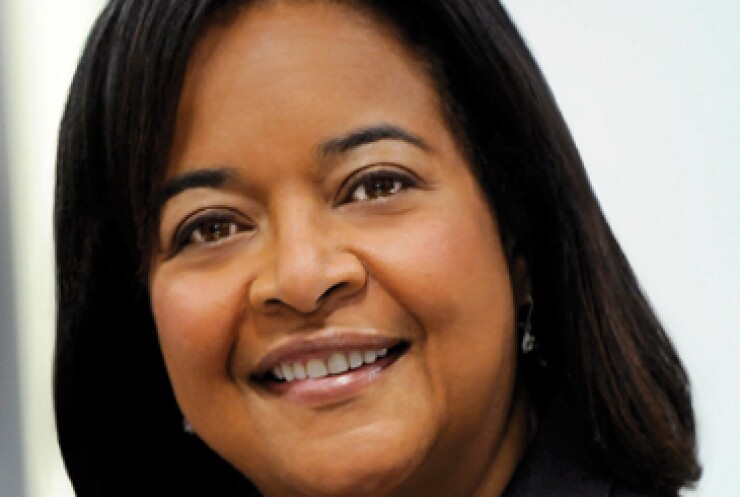
Silicon Valley Bank's failure is shining a spotlight on the Federal Home Loan Bank of San Francisco, which lent billions to the California bank last year to help shore up its liquidity and now stands to get repaid ahead of depositors and the Federal Deposit Insurance Corp.
The $209 billion-asset Silicon Valley Bank was taken over
Access to the Federal Home Loan Bank System may have influenced the borrowing strategy and risk appetite of SVB Financial, the bank's parent based in Santa Clara, Calif., experts said. The Home Loan Bank System has a "super lien" priority ahead of other creditors and the FDIC.
Silicon Valley Bank was the largest borrower of the San Francisco Home Loan Bank and a major shareholder as well. The bank borrowed $13.5 billion in the third quarter, making up 20% of the San Francisco Home Loan Bank's total borrowings at the time.
"The Home Loan Bank of San Francisco will get paid first, and that makes the FDIC's cost of resolution greater," said Karen Petrou, managing partner at Federal Financial Analytics. "The cost of resolution is $13 billion dollars more to the FDIC — and therefore to other banks and potentially the taxpayers — than it would otherwise be."
Mary Long, a spokeswoman for the San Francisco Home Loan Bank, said the failure of Silicon Valley Bank, its largest borrower, did not threaten the safety and soundness of the regional bank.
The "FHLB San Francisco's financial strength and stability is not in question," Long said. The San Francisco bank's president and CEO is Teresa Bazemore, a veteran banker with more than 30 years' experience.
The Home Loan banks conduct continuous assessments of each member's creditworthiness and financial condition based on information reported to the primary regulator, Long said. The banks generally determine the maximum amount of advances and terms based on eligible collateral pledged by member banks.
Silicon Valley Bank had no outstanding borrowings with the Home Loan Bank System at Dec. 31, 2021, according to regulatory filings. The bank had not disclosed its fourth quarter 2022 borrowings before it was taken over.
Some critics suggest the Home Loan Bank System creates a moral hazard because losses are shifted to the FDIC, raising concerns that the system could ignore risks in pricing short-term borrowings, called advances.
"The system has no discipline and no underwriting standards to measure the risks of lending that amount of money," said Cornelius Hurley, an adjunct professor at Boston University School of Law and a former director of the Federal Home Loan Bank of Boston.
Hurley claims there is an inherent conflict of interest in the way the Home Loan Bank System works. The 11 regional banks are private cooperatives with substantial public benefits including an implied government guarantee on the bonds they issue to investors. Members of the Home Loan Bank System are required to buy shares to become members. They also must purchase additional shares when they borrow.
"The largest borrowers of the Home Loan Bank System are also the largest shareholders," Hurley said.
Aaron Klein, a senior fellow in economic studies at the Brookings Institution, said the Home Loan Bank System touts itself as never posting a loss — because its losses are borne by the FDIC.
"My biggest concern is the lack of reform of the Home Loan Bank System, which seems to function as lender-of-next-to-last-resort for banks that have gotten themselves in too deep with troubled assets," Klein said. "The Home Loan Banks never post losses because they're first in line in the creditor queue, ahead of the FDIC and the Fed."
Silicon Valley Bank's bank's failure is likely to become
The Federal Home Loan Banks claim that liquidity in-and-of-itself supports affordable housing, while the Federal Housing Finance Agency seems to think the mission should be more directly tethered to housing.
Critics
Experienced venture capitalists were scratching their heads on Friday trying to understand how SVB's management got into a liquidity squeeze given the bank's expertise in advising technology companies on initial public offerings. SVB built its business lending to venture capital funds, technology companies and specialized services. The bank also had one of the wealthiest customer bases with a tech-heavy clientele.
Some suggested that Silicon Valley Bank made optimistic assumptions about interest rates in an attempt to capture a few extra basis points of interest income and net income.
"It boggles the mind that an organization as experienced and close to the venture cycle would let themselves get exposed like this," said a veteran investment banker in Silicon Valley, who asked that his name not be used. "They went out and bought 15- and 20-year federal mortgages and Treasuries, which are highly secure, but then they're exposed to interest rate risk."
Experts also are questioning why examiners were blindsided by the bank running aground in a liquidity squeeze.
"The rules are generally designed to catch these issues, particularly at the larger banks," Petrou said. "Supervisors are on the front lines, and they were in their sleeping bags."






